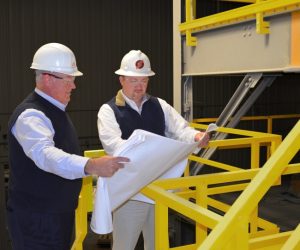5 Construction Estimating Mistakes & How FRP Can Help
Construction projects vary in size, location, and intended use and are rarely a one-size-fits-all. Extensive care must be taken throughout entire projects to limit any inaccuracies and problems. One of the key mistakes made in construction is estimation. Estimating any part of a construction project can be costly in time, money, and safety and should therefore be avoided at all costs. This blog post will cover the five most common construction estimating mistakes, why they occur, and how using FRP can make a substantial difference.
What is FRP?
FRP is the abbreviation for fiber-reinforced polymer. Fiber-reinforced polymers are composite materials made of polymer matrix strengthened with fibers such as glass or carbon. These materials are used in multiple industries because of their high strength and resistance properties. One of the primary applications of FRP composites is in civil engineering, but they also benefit the automotive and aerospace industries, consumer goods, and protective equipment1.
The benefits of using FRP in construction and engineering are vast. FRP is a lightweight, high-strength material with high durability, flexibility, and excellent corrosion resistance. It can strengthen existing structures and be used to build bridges, roads, and highway structures like decks, rails, and drainage systems. As we outline the key estimating errors made in construction, we will highlight how FRP can help overcome them.
Construction Estimating Errors
 Estimating crucial parts of a construction project can have devastating effects. From losing funding to overspending and incorrect materials to making guessing outcomes while under pressure, these are all the results of estimating errors. These errors can be avoided with adequate research, preparation, and knowledge among project managers and their teams. Below, we discuss some typical construction mistakes stemming from estimation.
Estimating crucial parts of a construction project can have devastating effects. From losing funding to overspending and incorrect materials to making guessing outcomes while under pressure, these are all the results of estimating errors. These errors can be avoided with adequate research, preparation, and knowledge among project managers and their teams. Below, we discuss some typical construction mistakes stemming from estimation.
Labor Costs
Estimating labor costs is a challenging feat because so many factors are involved. You cannot simply estimate a cost per hour like you can in other types of jobs. As every project is different, a manager cannot take the cost of one job and apply it to another. Factors that must be considered include how many workers are involved and each individual’s skill level and pay rate. In addition to these factors, many things could influence how long a job takes, such as lack of materials, weather conditions, or illness.
To minimize the risks of poor estimations, project managers should provide as much information as possible about the construction project, including the required work, the materials, and any timescales to work towards.
Using fiber-reinforced polymer can help reduce labor costs because it can be installed quickly and is easier to work with. FRP can be fabricated into components or panels, which can be done off-site and ready for installation as soon as necessary. It is also a lightweight material, making it easy to transport and install.
Materials and Supplies Cost
It is easy to over or underestimate the number of materials and supplies needed for a project, and just as easy to miscalculate how much they will cost. Estimates might be based on previous work, and inflation or supply levels could increase the prices. To reduce inaccurate material costs, clear and complete plans should be available to stakeholders so specific materials can be identified and costs can be calculated accordingly.
Lack of Risk Assessment
Not carrying out a risk assessment can be costly in many ways. Naturally, the safety of the construction site and the project itself must be assessed, but any other factor that could impact the project should be considered. This includes material costs, required customization, and the current supply and demand of materials or laborers.
Guesswork
There are many ways guesswork can cause issues in a construction project. Assuming costs or availability of materials, timeframes, and other aspects can all lead to discrepancies and challenges further down the line. Guesswork can be avoided by having clear project plans, budgets, and timeframes for stakeholders to work towards.
Last-Minute Changes
Avoidable circumstances can dramatically impact any project, especially in construction, but project managers should avoid last-minute changes at all costs. Last-minute decisions can result in simple errors that quickly become expensive to rectify.
There are many other estimation errors that occur during construction projects, so this list is incomplete. Projects should run smoothly with detailed planning, suitable building materials, and accurately informed estimations.
FRP Materials From Strongwell
Strongwell has been fabricating pultruded fiber-reinforced polymer products since 1956 and is considered the world’s leading FRP pultruder. We offer a vast range of products used across many industries, including bridge components, handrail systems, structural reinforcements, and much more.
Contact a team member today for more information on how FRP can help reduce estimation errors and improve your construction projects.
References
- Thomas, L. (2019) AZoCleantech https://www.azocleantech.com/article.aspx?ArticleID=917
- Motavalli, M., Czaderski, C., Gsell, D., and Schumacher, A. (2010) Fibre Reinforced Polymer Composite Materials For Building And Construction. Available at: https://www.sciencedirect.com/science/article/pii/B9781845693978500042?via%3Dihub